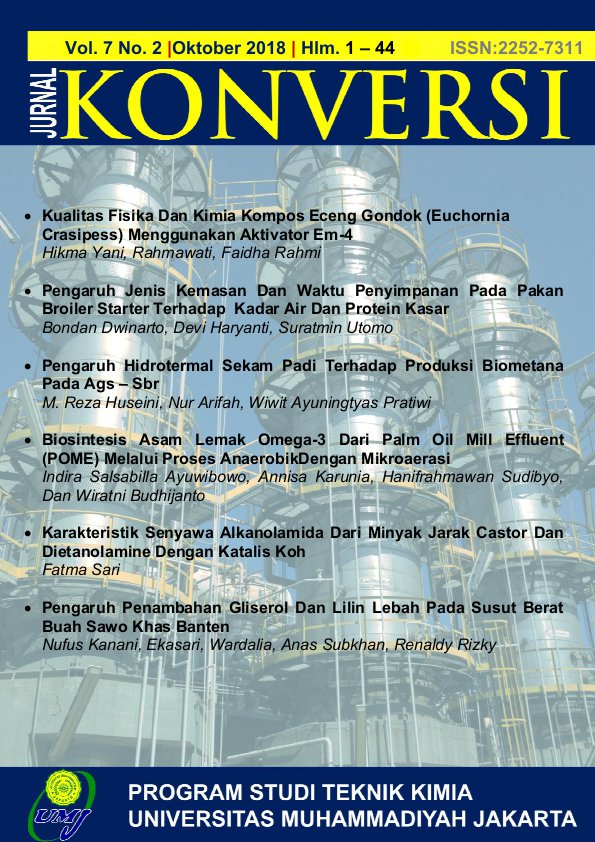BIOSINTESIS ASAM LEMAK OMEGA-3 DARI PALM OIL MILL EFFLUENT (POME) MELALUI PROSES ANAEROBIK DENGAN MIKROAERASI
Main Article Content
Abstract
Palm oil is one of Indonesia's leading export commodities. By 2020, the target of crude palm oil (CPO) production in Indonesia is 30 million tons. It is predicted that such production target is accompanied by a consequence of palm oil mill effluent (POME) emission as waste water, which will reach 90 million tons of POME waste per year. POME has high organic content which are characterized as chemical oxygen demand (COD) values, which ranges from 50,000 - 200,000 mg / L and pH values ranges from 4-4.5. Untreated POME is a serious environmental problem and therefore POME processing is urgently needed. One of the ideas is converting POME into more valuable products, by biosynthesis of omega-3 fatty acids from POME with anaerobic processes. The common product collected from anaerobic digestion is biogas. This study, however, intended to stop the process in the intermediate product, which is a series of organic acids, without biogas formation. The study aimed to explore the effect of controlled air injection in anaerobic processes on acid productions as the intermediate product in anaerobic digestion. The result showed that limited air injection (microaeration) improved process performance, especially with respect to acid production. Whereas through GC-FID analysis, the profile of saturated and unsaturated fatty acids was obtained. The acids have the potential to produce omega-3 fatty acids such as the appearance of nervoic, cis-eicosadienoic, cis-eicosapentanoic, and linolenic acids, with the peak of appearance occurring at different process durations. This preliminary study indicated that the biosynthesis of omega-3 fatty acids from POME through the anaerobic process was possible to be carried out but further study would be needed for process optimization.
Article Details
Issue
Section
Articles
Authors who publish with this journal agree to the following terms:
- Authors retain copyright and grant the journal right of first publication with the work simultaneously licensed under a Creative Commons Attribution License that allows others to share the work with an acknowledgement of the work's authorship and initial publication in this journal.
- Authors are able to enter into separate, additional contractual arrangements for the non-exclusive distribution of the journal's published version of the work (e.g., post it to an institutional repository or publish it in a book), with an acknowledgement of its initial publication in this journal.
- Authors are permitted and encouraged to post their work online (e.g., in institutional repositories or on their website) prior to and during the submission process, as it can lead to productive exchanges, as well as earlier and greater citation of published work (See The Effect of Open Access).
